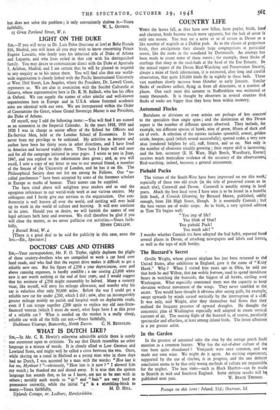COUNTRY LIFE WHEN the leaves fall, as they have now
fallen, from poplar, birch, lime4 and chestnut, birds become much more apparent, but the lack of cover is only one reason. You may see a score or so of ravens in Devon or a like number of wagtails in a Dublin park. As to the classes of gregarious birds, they amalgamate their already large congregations at particular roosts, like the rooks in the woodland by Dartmouth. An attempt has been made to count some of these roosts ; for example, those flocks of starlings that sleep in the reed-beds at the head of the Exe Estuary. In the annual report of the Devon Bird-Watching and Preservation Society; always a mine of fresh information, it is estimated, after long and careful observation, that quite 120,000 birds fly in nightly to these beds. These vast numbers slowly increase from October to early January. Similar flocks of swallows collect, flying in from all directions, at a number of places. One such roost this autumn in Staffordshire was estimated at, many thousands. It is thought by observers in several counties that, flocks of rooks are bigger than they have been within memory.


































 Previous page
Previous page